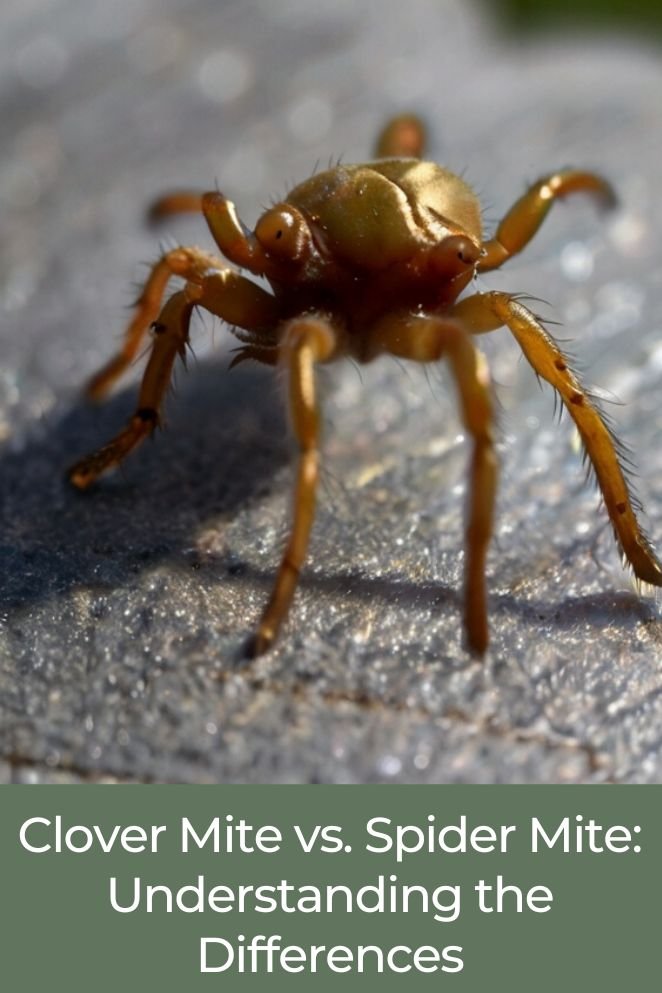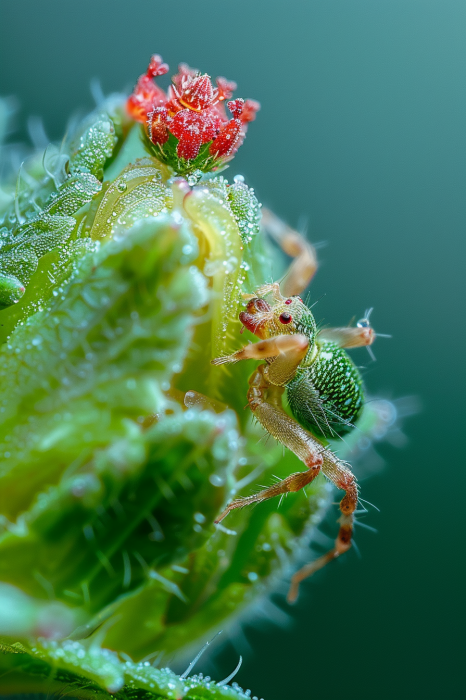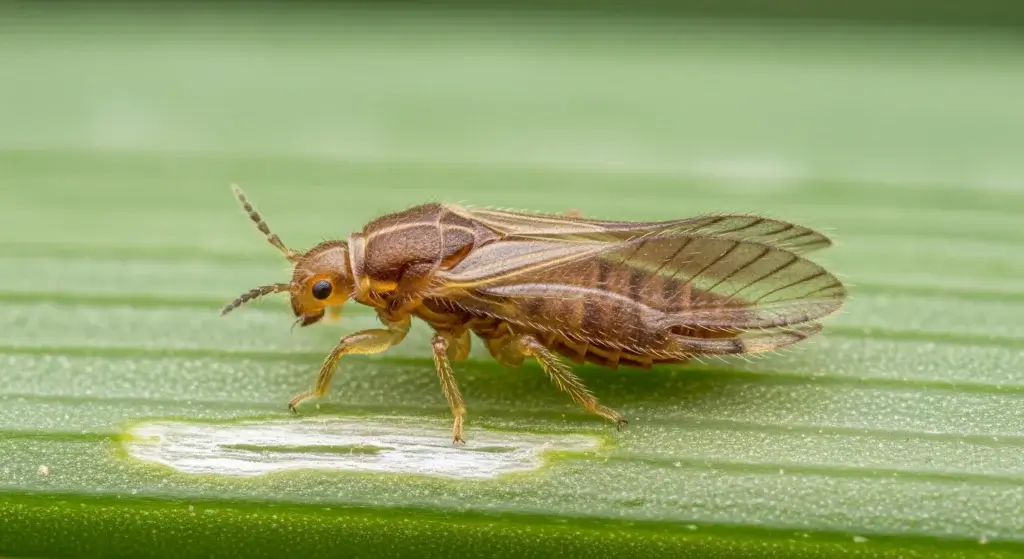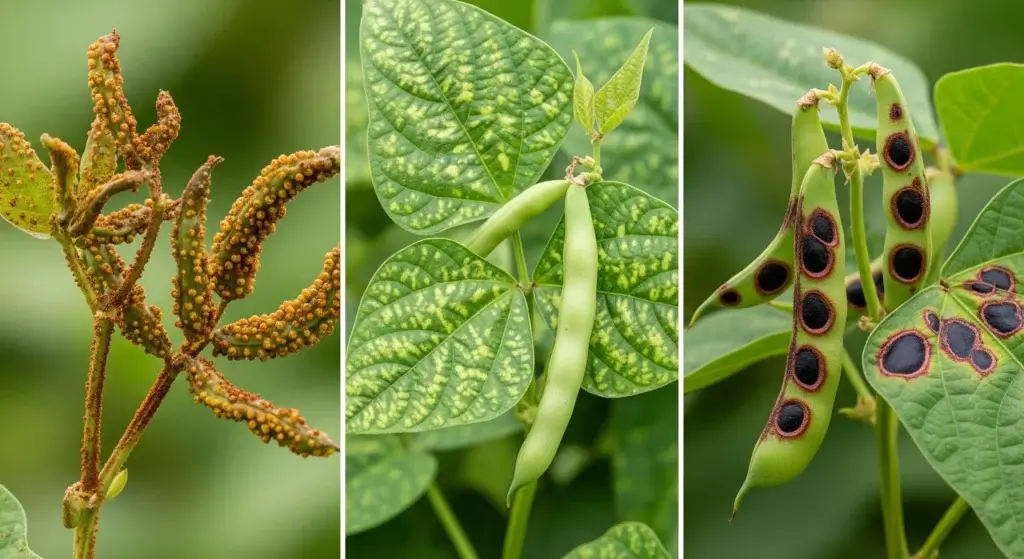
Clover mites and spider mites are both tiny pests that can cause significant damage to plants.
While they may look similar, these two types of mites have distinct characteristics and require different control methods.
In this blog post, we will discuss the differences between clover mites and spider mites and provide tips on how to control each type of mite effectively.
Clover Mite
Clover mites, scientifically known as Tetranychus urticae, are minuscule red arachnids with a penchant for plant sap.
Typically congregating in substantial numbers beneath leaves, they pose a threat by puncturing leaf cells and extracting sap, potentially causing harm to plants.
Although commonly associated with clover, these mites are versatile invaders, targeting a spectrum of plants, including grasses, vegetables, and ornamentals.
Vigilance and prompt action are essential when dealing with these pests to protect the vitality of your greenery.
- Read also: Whitefly vs. Aphid – Know the Difference
- Read also: A Guide to Natural Aphid Prevention
Spider Mite
Spider mites, scientifically known as Tetranychidae, constitute a different category of mites notorious for their sap-sucking habits.
These minute creatures, even smaller than clover mites, often evade the naked eye.
Positioned beneath leaves, spider mites wreak havoc by puncturing leaf cells and feasting on the precious sap within.
Their versatile appetite extends to a wide array of plants, including vegetables, fruits, ornamental plants, and grasses.
Spotting and addressing these elusive pests promptly is crucial to safeguard the health and vigor of your green companions.

Clover Mite vs. Spider Mite: Know The Differences
| Feature | Clover Mite | Spider Mite |
| Habitat | Outdoors (lawns) |
On plants (indoors/outdoors)
|
| Diet | Grasses, clovers | Plant sap |
| Signs of Infestation | Large numbers indoors |
Webbing, stippling on leaves
|
| Threat to Humans | Nuisance |
Harmful to plants
|
Control Methods For Each Type of Mite
Clover Mite
Cultural control
Regularly watering your plants is crucial for preventing clover mite infestations.
These mites thrive in dry conditions, so maintaining adequate moisture levels in the soil can create an unfavorable environment for them.
Additionally, ensuring overall good plant health strengthens the natural resistance of plants against mite attacks.
Biological control
Introducing natural predators proves effective in controlling clover mite populations.
Lady beetles and lacewings are known to feed on these mites, acting as beneficial allies in your pest management strategy.
Creating a balanced ecosystem in your garden can help keep clover mite numbers in check.
Chemical control
In cases of severe infestations, chemical control methods can be employed.
Insecticidal soap or neem oil, applied according to product instructions, can help control and reduce clover mite populations.
These options offer targeted solutions while minimizing the impact on the broader environment.
Spider mite
Cultural control
Similar to clover mites, spider mites can be deterred by regular plant watering.
Maintaining optimal plant health by addressing nutrient deficiencies and providing suitable growing conditions creates an inhospitable environment for spider mites.
Biological control
Natural predators such as lady beetles and lacewings are effective in controlling spider mite populations.
By introducing these beneficial insects into your garden, you encourage a natural balance that mitigates the threat of spider mites without resorting to chemical interventions.
Chemical control
When faced with a significant spider mite infestation, insecticidal soap or neem oil can be applied as part of a targeted chemical control strategy.
Following recommended application guidelines ensures effective control while minimizing potential harm to beneficial insects and the environment.

- Read also: Effective Aphid Control Strategies for Indoor Plants
- Read also: Preventing The Impact of Invasive Plants
Conclusion
Although clover mites and spider mites share a visual resemblance, their unique traits demand distinct control approaches.
Delve into the dissimilarities between these two mite varieties and deploy targeted control methods to safeguard your plants effectively.
By acquiring a nuanced understanding of these distinctions, you empower yourself to shield your greenery from potential harm and ensure a thriving garden.
FAQs
Clover mites are larger and red, while spider mites are smaller and often difficult to see with the naked eye.
While some control methods, such as cultural control and biological control, can be effective for both types of mites, chemical control methods may need to be tailored to the specific mite species.
Regularly checking your plants for mites, especially during periods of high infestation risk, can help you catch and control mite populations before they cause significant damage.



